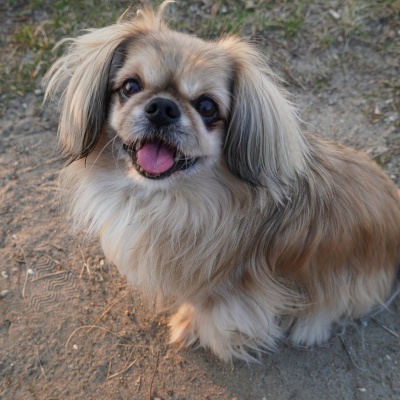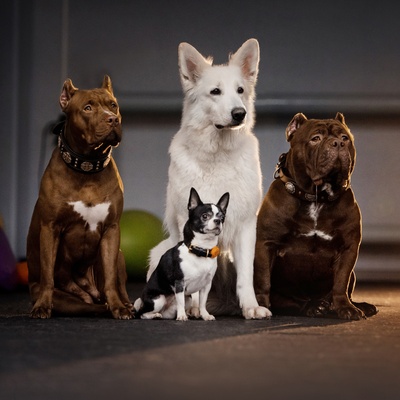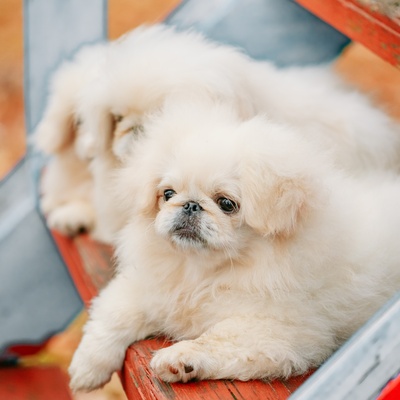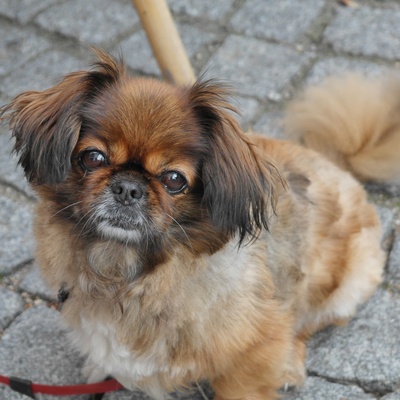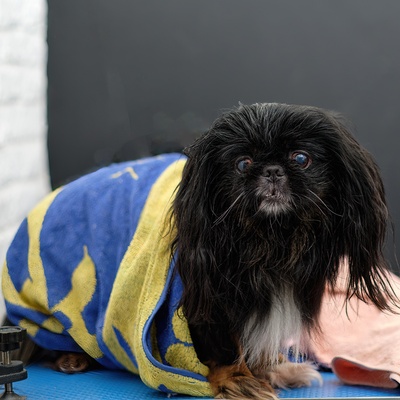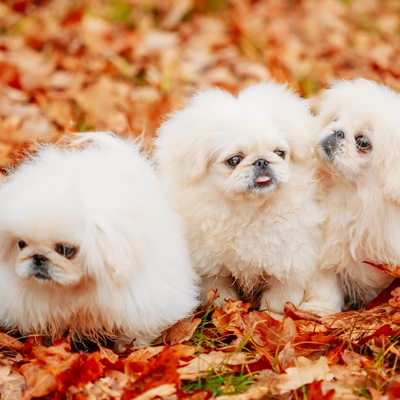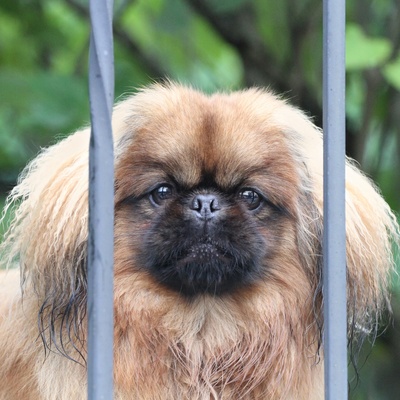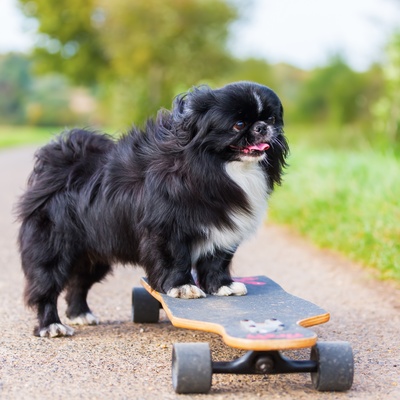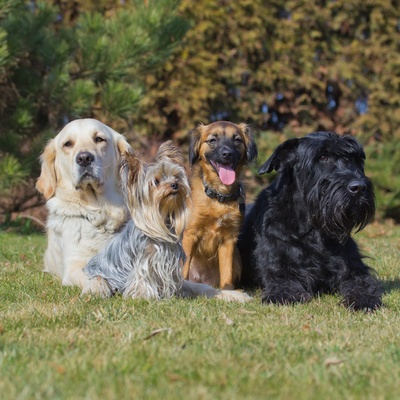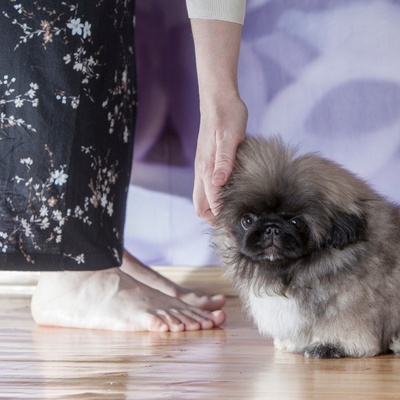Introducing the Pekingese
Find out everything you need to know about the Pekingese: its characteristics, its behavior, its education, its price.
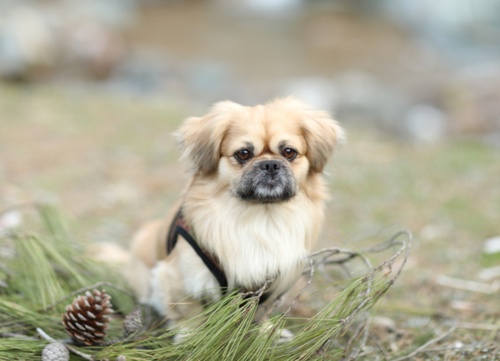
Find out everything you need to know about the Pekingese: its characteristics, its behavior, its education, its price.
The Pekingese, with its lion-like mane and dignified expression, has a rich history dating back to ancient China. Once considered sacred and reserved for royalty, the Pekingese is now a beloved companion dog worldwide. Known for their bravery and strong will, these small dogs have a personality much larger than their size. Whether it's providing companionship or showing off in the show ring, the Pekingese excels in many areas. Loyal and affectionate, Pekingese dogs are known for forming strong bonds with their families and displaying a charming sociability.
This section outlines the unique features of the Pekingese breed.
The Pekingese belongs to the toy group, known for small, friendly companion dogs. These dogs are bred for companionship and exhibit a loyal and affectionate temperament.
The Pekingese is a small dog, typically measuring 6 to 9 inches at the withers and weighing 8 to 14 pounds.
Pekingese have a long, double-layered coat. The outer coat is coarse and straight, while the undercoat is soft and dense.
Pekingese coats can vary from gold to red, sable, and black, with various shades within these colors.
Pekingese adapt well to apartment living and thrive on close companionship with their owners.
Pekingese are friendly and affectionate with their families. They can get along well with children and other pets, though they may be reserved with strangers.
Pekingese are generally healthy but can have respiratory issues due to their flat faces, as well as eye conditions and joint problems.
The Pekingese is independent and proud, making training challenging. Patience and positive reinforcement are essential, with kindness and consistency being key.
We can help!
Every dog has its own character, and so do you. Making the right choice will ensure his well-being and yours.
Take our quiz to find out which breed is right for you, based on your personality, lifestyle, location and many other criteria.
Don't wait any longer and take the quiz to find out the answer!
The Pekingese is a small, well-balanced dog with a distinctive lion-like mane and a dignified expression. Its coat is long and flowing, often seen in shades of gold, red, sable, and black, with a prominent flat face that gives it a unique appearance.
Pekingese are petite dogs. Females typically stand between 6 to 9 inches, while males also range from 6 to 9 inches in height. Females usually weigh between 8 to 12 pounds, and males weigh between 10 to 14 pounds. Pekingese puppies grow steadily, reaching their full size and weight by about one year of age.
Pekingese have a luxurious, long coat with a coarse, straight outer layer and a soft, dense undercoat. The fur forms a lion-like mane around the neck and has longer fringes on the ears, tail, and the back of the legs, giving it a majestic appearance.
The Pekingese's coat comes in a wide range of colors, including gold, red, sable, black, and sometimes white. These colors can have various shades, making each Pekingese unique in its coloration.
The Pekingese's double-layered coat requires regular maintenance. They shed year-round, with more significant shedding in spring and autumn. Daily brushing is essential to prevent matting. Bathing should be done as needed, typically every few months.
The Pekingese is a balanced, well-proportioned dog with a regal appearance. The head is broad and flat with a short, wrinkled muzzle. They have large, round, dark eyes and heart-shaped, high-set, feathered ears. The compact, sturdy body has a level topline and well-developed muscles, with a high-set tail carried over the back and covered in flowing hair.
Pekingese are known for their loyalty, independence, and affectionate nature. They are brave, dignified, and form strong bonds with their families.
With over 400 dog breeds divided into 10 groups, the Pekingese belongs to the toy group. This group includes small companion dogs like Pugs, Shih Tzus, and Chihuahuas, known for their affectionate nature. Pekingese stand out for their regal bearing, intelligence, and loyalty, making them excellent companion dogs.
Pekingese are delightful and dignified dogs. They are known for their loyalty and affectionate nature towards their owners, often forming strong bonds. These small dogs thrive with a present and attentive owner who can provide the love and attention they need to flourish. Despite their affectionate nature, Pekingese also have an independent streak that must be respected.
Pekingese are sociable and generous dogs. They enjoy human companionship and generally get along well with people, including strangers. Pekingese can be great companions for children, thanks to their affectionate and gentle demeanor. However, it is essential to work on their social skills from a young age to ensure they grow into well-rounded adults.
Take the test and find out the dog breed that matches your personality and lifestyle.
Pekingese can adapt well to various living situations, including apartments, houses, urban, and rural environments. Their small size makes them particularly suited for apartment living, but they thrive on the attention and presence of their owners. Pekingese need at least two walks a day, each lasting around 20 minutes, to keep them healthy and happy.
While adaptable, Pekingese benefit from having access to an outdoor space where they can satisfy their curiosity and expend energy. An environment that allows them to explore safely is ideal for their well-being.
The Pekingese is an intelligent breed that can learn commands quickly. However, their independent nature means training requires patience and consistency. Positive reinforcement with treats and praise works best. Given their small size and curiosity, equipping them with a GPS collar is advisable to prevent any accidental escapes or losses.
Pekingese dogs can be attentive and responsive during training sessions, but their stubborn streak may require extra persistence. Early socialization is crucial to ensure they develop good behavior and social skills. With proper training, Pekingese can be well-behaved and delightful companions.
The Pekingese is generally a healthy breed but requires daily care to maintain its well-being. Regular grooming, a balanced diet, and preventive veterinary care are essential to prevent diseases and infections.
Pekingese dogs generally enjoy good health, but they are prone to specific health issues due to their brachycephalic (flat-faced) structure. Common problems include respiratory issues, eye conditions, and joint problems such as patellar luxation. Symptoms of these conditions can include difficulty breathing, excessive tearing, and limping. The typical lifespan of a Pekingese is between 12 and 14 years.
Regular veterinary check-ups are crucial for maintaining your Pekingese’s health. Ensure vaccinations, deworming, and parasite treatments are up-to-date. Daily care includes brushing the coat to prevent matting, cleaning the ears, dental care to prevent tartar buildup, and regular nail trimming. Be mindful of potential allergies and consult a vet for appropriate recommendations. The Pekingese is not a hypoallergenic breed.
Like all dogs, Pekingese have specific nutritional needs that must be met to maintain their vitality and strength. A balanced diet rich in proteins and vitamins is essential for their overall health. Premium kibble specifically formulated for small breeds is recommended as it provides a balanced dietary foundation. If additional protein is needed, you can supplement their diet with lean white and red meat, but it's important to limit fats to avoid weight gain and other health issues.
The Pekingese is a well-regarded breed with several breeders available. It's important to consider several factors before adopting.
Before adopting a Pekingese, there are some important points to consider. First and foremost, you need to check that the breeder is reputable. This means visiting the breeder's premises to assess the living conditions and behavior of the dogs. Responsible breeders will provide transparent information about the puppy's health and any genetic illnesses in its lineage.
Lastly, mandatory electronic identification, like microchipping, is not always mandated at the federal level in the United States for cats and dogs. But microchipping is widely acknowledged as a successful way to permanently identify pets and increase the possibility of reuniting lost pets with their owners, even in the absence of universal regulations. As a pet owner, it is advised to inform yourself about municipal laws to ensure the safety and wellbeing of your pet.
The acquisition cost of a Pekingese can vary based on several factors. These factors include lineage, pedigree, the reputation of the breeder, and the age of the dog. Pekingese puppies generally cost between
and
Additionally, maintaining a Pekingese involves costs such as veterinary fees and food, estimated at around
to
annually.
Choosing a dog that matches your personality and lifestyle will ensure your well-being and his!
